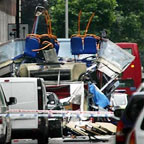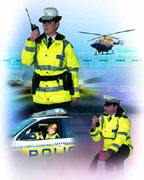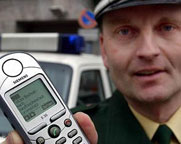Tuesday 6 June, 2006, 08:22 - Radio Randomness
 A London Assembly report published yesterday (5 June 2006) into the events surrounding the terrorist attack on London on 7 July 2005 identified that the major problem suffered by the emergency services at the event was the lack of adequate radio communications. It identified that, other than the British Transport Police, none of the radio systems used by police, fire or ambulance services functioned on the London Underground. Further, it goes on to note that the different radio systems used by the different emergency services means that they are unable to effectively communicate from one service to another. It also states that the reliance on mobile phones by the emergency services (in particular the Ambulance service and for communication between senior officers) was effectively an accident waiting to happen.
A London Assembly report published yesterday (5 June 2006) into the events surrounding the terrorist attack on London on 7 July 2005 identified that the major problem suffered by the emergency services at the event was the lack of adequate radio communications. It identified that, other than the British Transport Police, none of the radio systems used by police, fire or ambulance services functioned on the London Underground. Further, it goes on to note that the different radio systems used by the different emergency services means that they are unable to effectively communicate from one service to another. It also states that the reliance on mobile phones by the emergency services (in particular the Ambulance service and for communication between senior officers) was effectively an accident waiting to happen.What's perhaps surprising is that none of these problems were unknown. There have been plans afoot for over 10 years to install radio communications across the London Underground, including in tunnels. The project, known as 'Connect' was awarded to a consortium in 2000. The original plan was to install infrastructure across the underground to support both 'TETRA' based communications for the tube trains themselves as well as to support cellular communications. However technical difficulties have meant that the project has now been restricted to just providing TETRA for cab-to-control communications. The project is still in a 'beta' phase with no actual radios in service.
Since the emergency services first used radio, each of the services had its own radio system. In times of crisis, each service established a mobile headquarters, often in the back of a van, and as long as each services' HQ was parked near the other services, communications between the different services could be achieved by shouting from van to van, or by running hand-written paper notes between them. The events in London, however, occured in several different and diverse locations and with improvements in communication and information technology, there is less of a need for a remote HQ as everything can be dealt with from the regular HQ. As such, communication between the services is now worse than it might have been 10 or 15 years ago and in a situation such as the terrorist attacks on London last July, would have been virtually non-existent.
 There is light at the end of the tunnel, however, in the form of 'Airwave'. Airwave is a TETRA based radio service being rolled-out across the UK for use by all the emergency services. Initially intended just for the police, Airwave has now been adopted by the ambulance and fire services too. Once roll-out is complete, all three main emergency services will be using the same radio technology and the same radio system so inter-service communications should be much more straight forward.
There is light at the end of the tunnel, however, in the form of 'Airwave'. Airwave is a TETRA based radio service being rolled-out across the UK for use by all the emergency services. Initially intended just for the police, Airwave has now been adopted by the ambulance and fire services too. Once roll-out is complete, all three main emergency services will be using the same radio technology and the same radio system so inter-service communications should be much more straight forward.It is a well understood fact that, in times of crisis, usage of mobile phones rockets. Everyone near or involved in the crisis will wish to contact their relatives to tell them they are OK, or to call the emergency services to try and garner assistance. Mobile networks are not designed to handle such high loads and the inevitable result is severe congestion and in some cases, network failure. With this in mind, the GSM specification includes a number of features to try and ensure that emergency service users can continue to communicate at such times. Access overload class (ACCOLC) is a UK designed system in which ACCOLC enabled mobiles are given priority access to a cellular network.
 Each ACCOLC mobile phone is assigned a priority from 1 to 15 (normal users are randomly assigned a priority in the range 1 to 10, whilst emergency users have priorities 11 to 15). The network selectively disables the lower priority mobiles to ensure that higher priority communications can continue. Thus priorities 1 to 5 may be disabled, randomly cutting off half of all civilian users and thus freeing the network for emergency communications. There is also a feature of GSM (version 2+) known as enhanced multi-level precedence and pre-emption (eMLPP) - this too allows priority access for certain users, however it is not commonly implemented on many commercial GSM networks being reserved for those networks designed to support railway communications (GSM-R).
Each ACCOLC mobile phone is assigned a priority from 1 to 15 (normal users are randomly assigned a priority in the range 1 to 10, whilst emergency users have priorities 11 to 15). The network selectively disables the lower priority mobiles to ensure that higher priority communications can continue. Thus priorities 1 to 5 may be disabled, randomly cutting off half of all civilian users and thus freeing the network for emergency communications. There is also a feature of GSM (version 2+) known as enhanced multi-level precedence and pre-emption (eMLPP) - this too allows priority access for certain users, however it is not commonly implemented on many commercial GSM networks being reserved for those networks designed to support railway communications (GSM-R).So from the perspectives of the communication abilities of the UK emergency services, the attacks came just at the right (or is that wrong) time, during a period of transition and when sub-terranean communications were not at their best. It is to be hoped, therefore, that even if the atrocities had not taken place, the situation would be improving. With the publishing of the London Assembly report, let us pray that adequate communications are in place before anyone else decides to take a pop at the innocent people of our capital city (or any other part of the UK or the world for that matter).
1 comment
( 1399 views )
| permalink
| 



 ( 3 / 9030 )
( 3 / 9030 )




 ( 3 / 9030 )
( 3 / 9030 )

